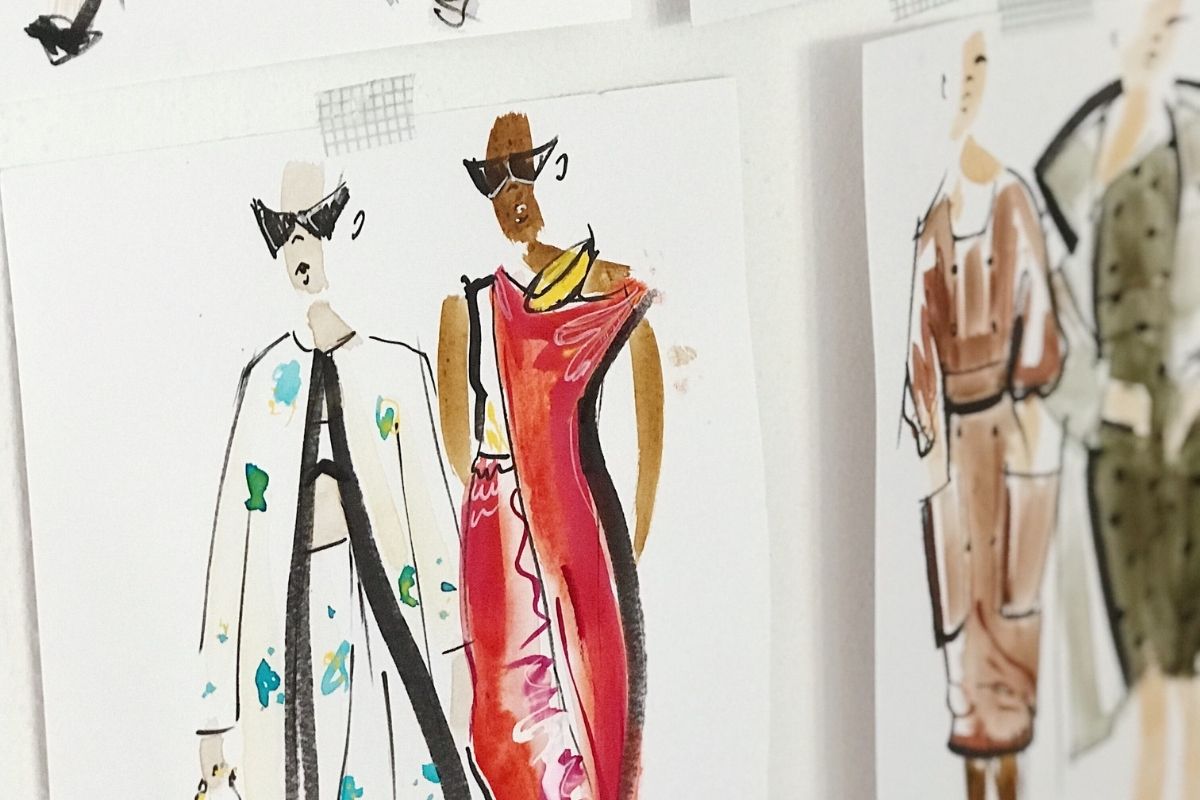Lessons: Design School Collections
“What inspired these young designers started almost a year ago with sketches, inspiration, and research,” Explains Explains Francesca Sammaritano. “The end product is what you see over here. You’re only seeing one look per designer. But, I wanted to share that with you.”
“It gives you a wide range of specializations that you can go into within the fashion industry, whether it be men’s wear, outerwear, women’s wear, or a more designer-level collection or aesthetic that you want to pursue.”
One designer did a collection of women’s wear outerwear with a lot of in-depth research on how outerwear works, what kind of technical fabrics you need, what colors work best, water repellency, all kinds of removable liners for when it’s cold or when it’s raining while also giving the option to wear the garment in different ways.
If you zip out the liner, you can wear the liner as a vest. She went a step further. She had a collection of shoes and boots made to go with her collection. The design process is inclusive of accessories as well as garments. She will pursue an opportunity in outerwear.
Another example of the variety of jobs or opportunities that you can pursue once you become a designer could be women’s wear designer on a higher level. This designer really values the art of craft. He invested in a weaving machine. He made this fabric. He bought the yarns.
He designed the fabric, made yardage, and then he sewed the garment. He is now pursuing an opportunity in designer women’s wear with a focus on craft. Another example that I thought would be wonderful to show is our menswear designer who coincidentally won the Menswear Designer of the Year.
This is just one example of his extensive collection. In this, he incorporated a few different aspects. He used natural fibers. He printed his own fabric and his own print from curtains that inspired him from growing up in his house in childhood. He is a menswear designer.
But, we found that in the conversations that we had with him and in the presentations that he’s had of his collection, a lot of people would ask him, would you consider designing for women’s wear too? Because as a woman, I would wear your garments. Or you could do both. Or there could be a customer for either/or. This is a very interesting, trendy category that we find a lot of students are going for.
